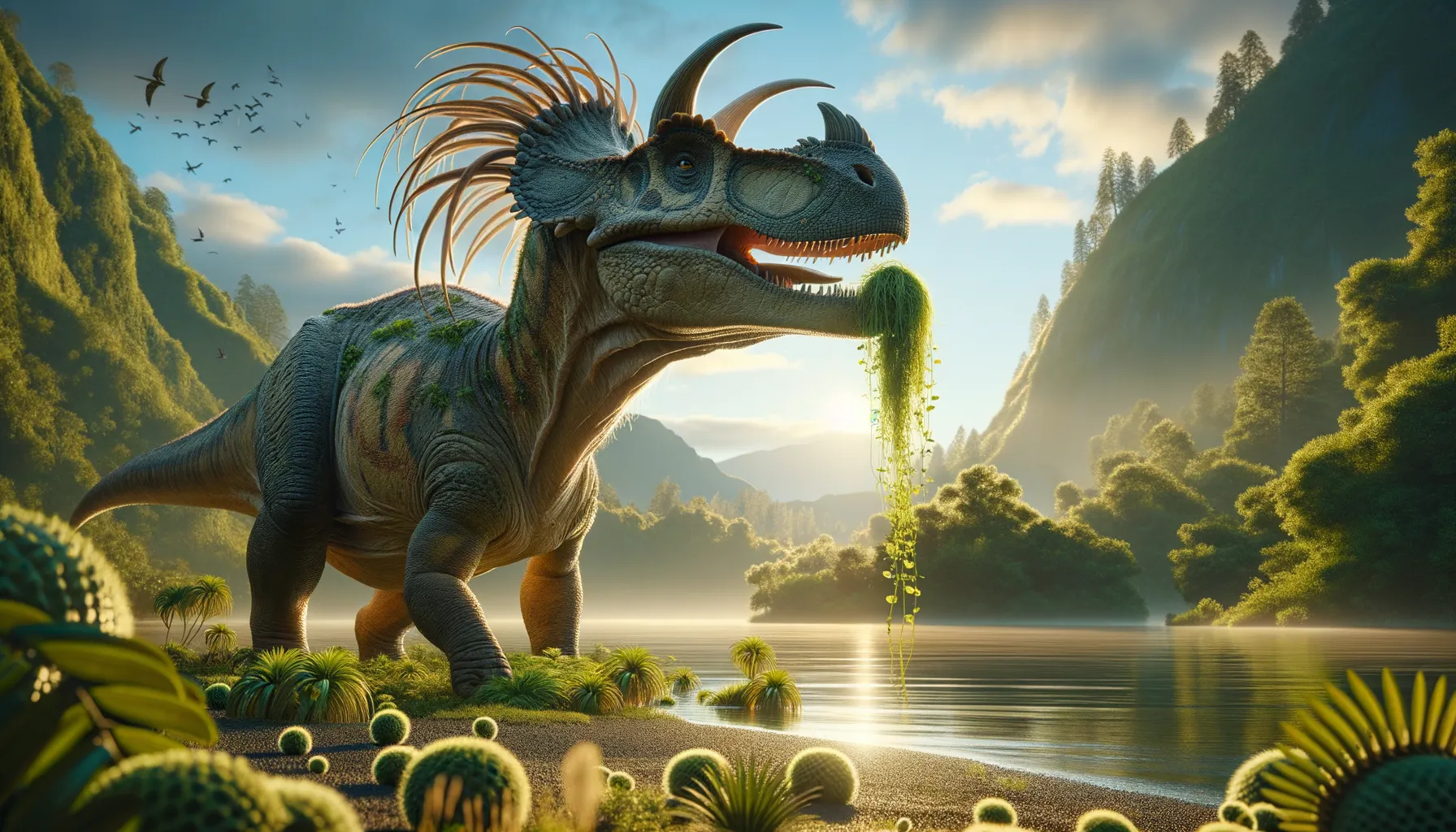
Chasmosaurus
Discover the majesty of the dino with a frill!
Period
Cretaceous
Length
Up to 5 meters (16 feet) in length.
Height
Stood around 2 meters (6.5 feet) tall.
Weight
Weighed about 1.5 to 2 tons.
Chasmosaurus was a ceratopsian dinosaur known for its large, ornate frill and pair of brow horns. Living during the Late Cretaceous period, it was primarily a plant-eater, using its beak to clip vegetation. It roamed the ancient lands that are now part of Canada and the United States, thriving in warm, lush environments. Chasmosaurus fossils have provided valuable insight into the diversity and adaptation of ceratopsian dinosaurs.
Diet
Chasmosaurus was a herbivore, primarily feeding on low vegetation such as ferns and cycads. Its beaked mouth was ideal for clipping plants, and it likely ate a substantial amount daily to sustain its large size.
Hunting
Being an herbivore, Chasmosaurus did not hunt but rather foraged for plants. It would have needed to be vigilant for predators while feeding, relying on its horns and frill for defense.
Environmental challenges
Chasmosaurus faced predators like the Tyrannosaurus rex, making survival a constant challenge. Occasional droughts could have affected their food supply, posing a threat to their sustenance. They needed to compete with other herbivore species for food resources in their ecosystem.
Speed
Chasmosaurus was relatively slow-moving.
Lifespan
Estimated to live around 20 to 30 years.
First discovery
First discovered in Alberta, Canada in 1898.
Fun Facts
- Chasmosaurus was a plant-eating dinosaur that lived about 75 million years ago during the Late Cretaceous period.
- Its name means 'opening lizard', which refers to the large openings in its frill, a characteristic feature on its head.
- Chasmosaurus weighed around 2 tons, which is about the same as a small car, and was approximately 16 to 20 feet long.
- This dinosaur had a large head with a beak-like mouth, similar to a parrot, perfect for cropping plants.
- Chasmosaurus is believed to have traveled in herds, which offered protection against predators like T. rex.
- Despite its large horns and frill, Chasmosaurus was likely a gentle giant, spending most of its time foraging for plants.
- Fossils of Chasmosaurus have been primarily found in what is now Alberta, Canada, providing exciting insights into its habitat.
Growth and Development
Chasmosaurus hatched from eggs, growing rapidly in its early years. Juveniles were likely smaller and more vulnerable to predators. As they matured, their frills and horns developed, becoming crucial for defense and display.
Habitat
Chasmosaurus inhabited subtropical, relatively flat floodplains with abundant vegetation. This type of environment provided ample food and water sources, supporting a thriving population. Fossils found in Alberta suggest they lived in herds, which would have enhanced their survival chances.
Interaction with other species
Chasmosaurus shared its habitat with various herbivores and carnivores, leading to both competition and predation. It had to be social and possibly lived in groups to better protect against predators. Cooperation among herds would have also facilitated more efficient food foraging.
Natural lifespan
Chasmosaurus could live naturally for about 20–30 years.
Reproduction
Chasmosaurus reproduced by laying eggs, with nests possibly protected by adults. After hatching, young dinosaurs grew rapidly to reach a safer size, gradually developing their characteristic horns and frill. Parental care could have been present, offering some protection to the young.
Social behaviour
Chasmosaurus likely lived in herds, providing safety in numbers against predators. Social structures may have involved rituals or displays involving their horns and frills, important for communication. Herd living would have helped in coordinating movement, finding food, and offering mutual protection.
Fossil locations
Fossils of Chasmosaurus have been predominantly found in the Dinosaur Park Formation in Alberta, Canada. Additional fossils have been unearthed in various locations in the northwestern United States. These finds provide critical insights into the Late Cretaceous ecosystems of North America.
